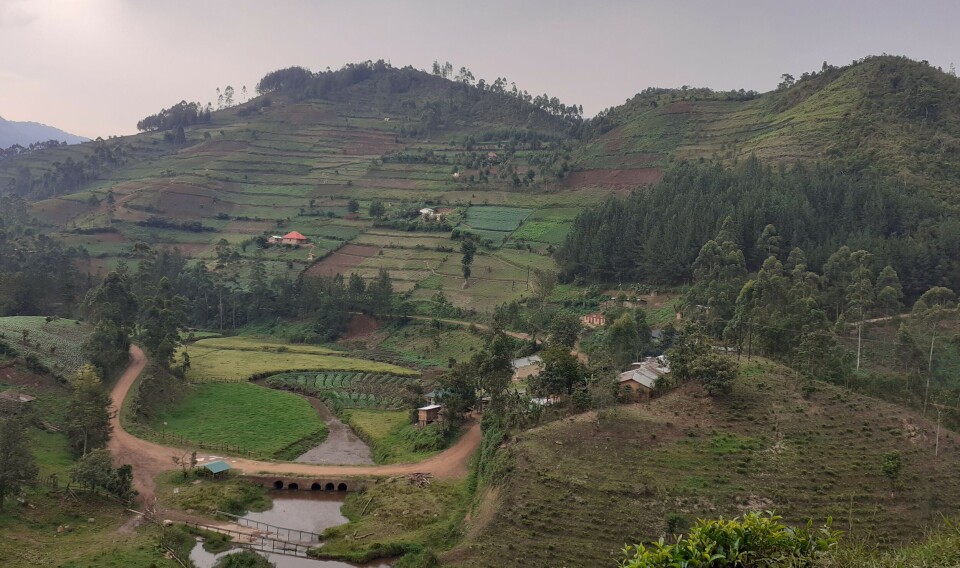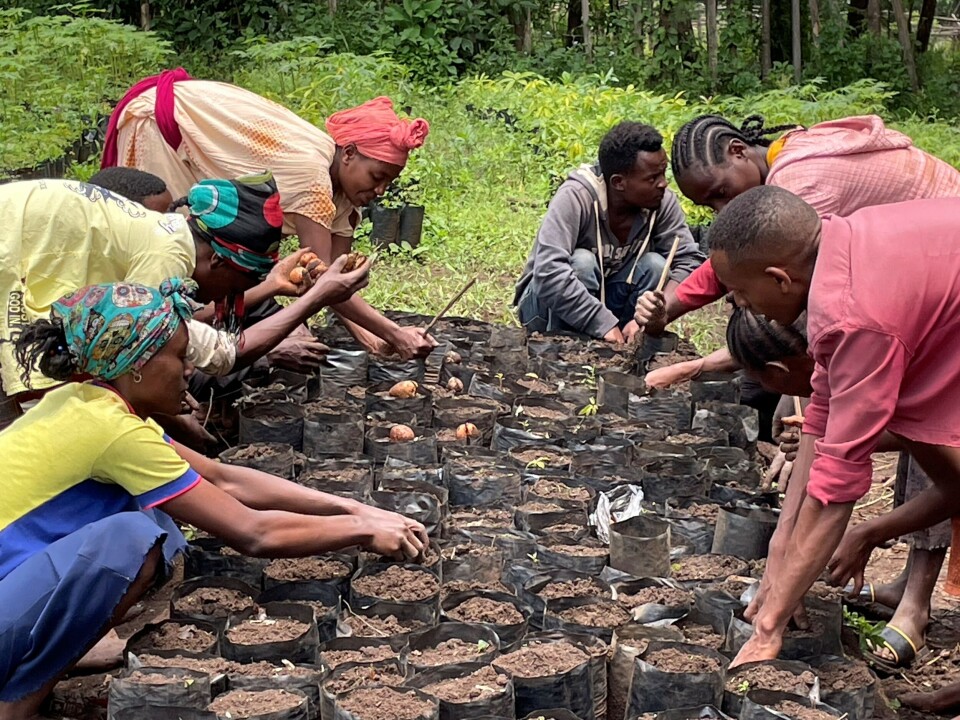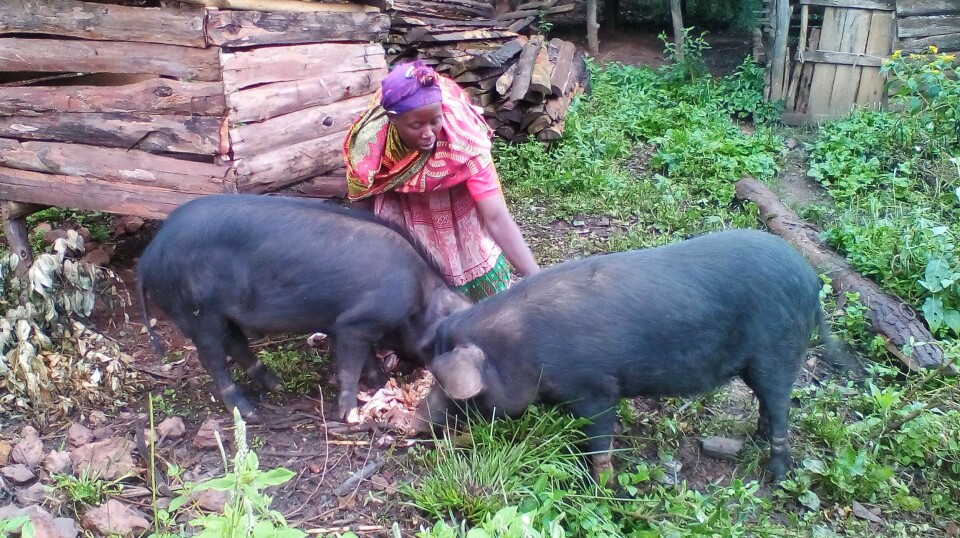THIS CONTENT IS BROUGHT TO YOU BY the Norwegian University of Life Sciences (NMBU) - read more
Researchers warn: Climate change in African mountains has a greater impact than previously thought
Immediate action is needed to help people adapt to the changing conditions.

Farmers living in Africa’s mountain regions report alarming changes in local weather patterns. These changes include increased temperatures, reduced fog, and changes in rainfall. There is also an increase in extreme climate events such as droughts and floods.
The increasingly unpredictable weather has led to significant changes in planting and harvesting schedules, as well as increased pests and disease in crops, livestock, and humans.
This has resulted in reduced crop yields – and less food. The changes have a profound impact on food security and public health. The repercussions extend beyond mountain communities to the thousands of people who depend on these resources.
"We already knew that mountain communities are particularly vulnerable to climate change. However, data was only available for a few well-studied mountains. This is surprising given that around 288 million people live in the African mountain regions," says Aida Cuni-Sanchez.
She is a researcher at the Norwegian University of Life Sciences (NMBU), and was the the lead researcher for the new study published in Nature Climate Change.
Researchers have now interviewed 1,500 smallholder farmers from ten mountain regions in eight countries across equatorial Africa: Cameroon, Ethiopia, Uganda, Rwanda, Burundi, Democratic Republic of Congo, Kenya, and Tanzania.
Why didn’t we know this before now?
“In most African mountains, there are no meteorological stations or long-term records of crop yields,” says Cuni-Sanchez.

“Just because the changes weren't recorded, doesn’t mean they didn’t occur,” she says.
In the absence of historical data, the researchers recorded the farmers’ experiences and indigenous knowledge to build a record of past changes.
They found that climate change has affected the environment in multiple ways.
How can mountain communities adapt to climate change?
The study revealed that mountain communities have changed their farming practices in response to the changes in their environment.
These changes include adopting new crop varieties and investing in alternative ways to manage water resources and soil erosion. Farmers have also increased their use of agrochemicals. Some are investing in more veterinary care for their livestock.
Whilst similar effects of climate change were reported across all ten mountain regions studied, the ways the farmers try to adapt to these changes differed.
The researchers note that a universal 'one-size-fits-all' approach to addressing the consequences of climate change should be avoided.

“Adaptation strategies must be tailored to the specific environmental, social, and political dynamics of each mountain region,” explains co-researcher Rob Marchant from the University of York.
He adds that strategies should carefully consider the unintended consequences of national policies. They should also consider the constraints of ongoing violent conflicts.
Tailored, community-driven solutions
The researchers call for policies that are sensitive to the unique environmental, social, and political dynamics of each mountain area.
As the study shows, national policies can have unintended consequences and may fail to address local challenges. Additionally, local adaptation is particularly difficult in conflict-affected regions.
The researchers urge increased investment in community-driven solutions that respect the unique characteristics of each region.
“Our study shows that in the conflict-affected English-speaking regions of Cameroon, farmers prefer to focus on farming land near villages. They stopped livestock-farming as animals can be easily stolen," says Cuni-Sanchez.
She further explains that the eastern part of the Democratic Republic of Congo is also affected by conflict. There, farmers are giving up on agriculture and instead focusing on livestock.
"This is because when conflict escalates, they can move away and relocate with their cows. They can’t move their farms and crops. So, one needs to consider each context differently,” she explains.

Cuni-Sanchez states that collaboration between local communities and other stakeholders is necessary to develop sustainable adaption strategies.
"Our study shows a need for global support to ensure that mountain communities have the tools, resources, and strategies they need to adapt to climate change and sustain their livelihoods for future generations," she says.
The researchers have therefore also written a policy brief to reach policymakers and practitioners.
“The profound effects of climate change on mountain communities should not be underestimated,” adds Marchant.
He says that by working with international partners on how land-use policy is developed and implemented, they hope to accelerate learning and support change from the ground up.
Reference:
Cuni-Sanchez et al. Perceived climate change impacts and adaptation responses in ten African mountain regions, Nature Climate Change, vol. 15, 2025. DOI: 10.1038/s41558-024-02221-w
More content from NMBU:
-
Shopping centres contribute to better health and quality of life
-
We're eating more cashew nuts – and the consequences are serious
-
Do young people with immigrant parents have better health?
-
Who’s picking your strawberries this summer?
-
Can coffee grounds and eggshells be turned into fuel?
-
Rising housing costs fuel inequality in Norway





































